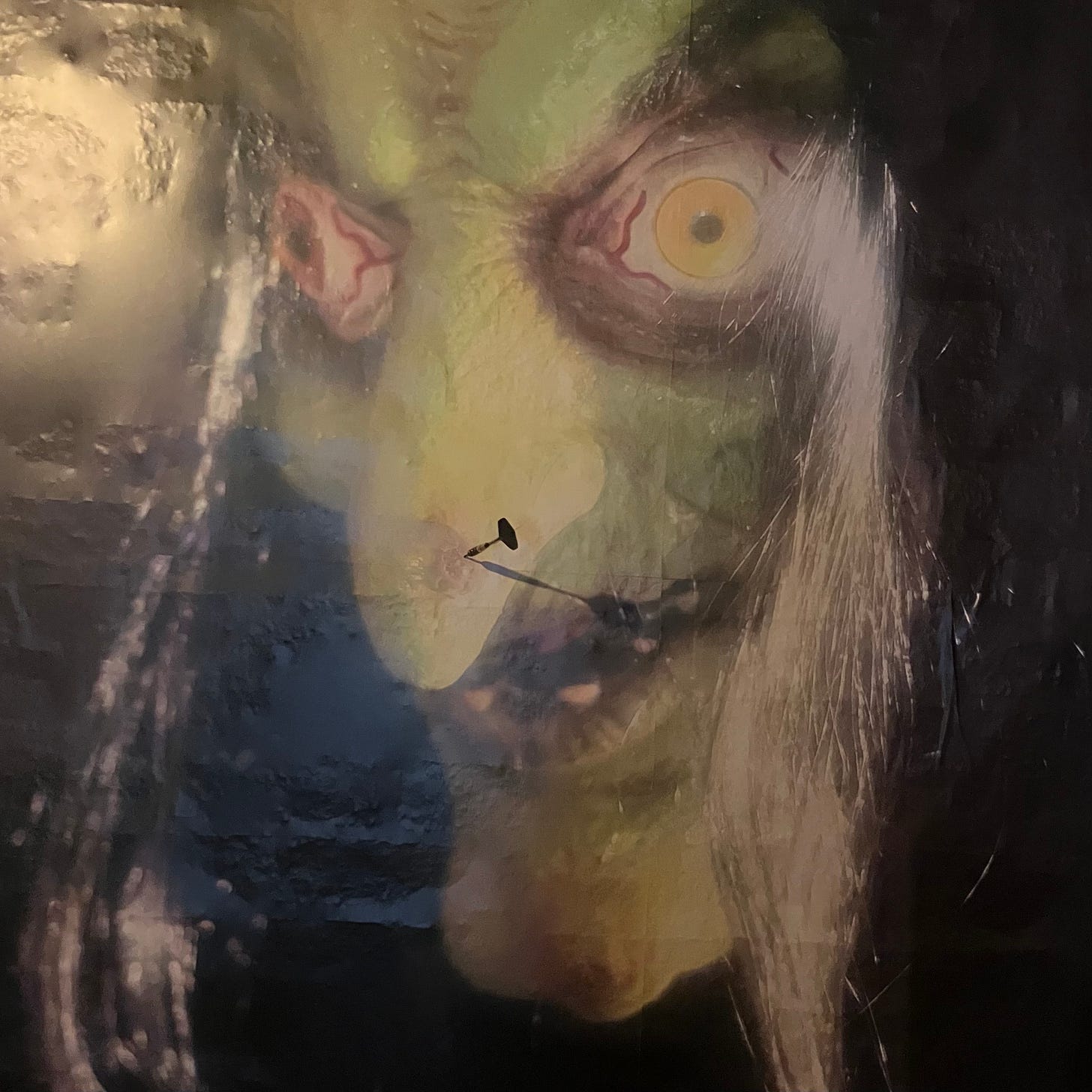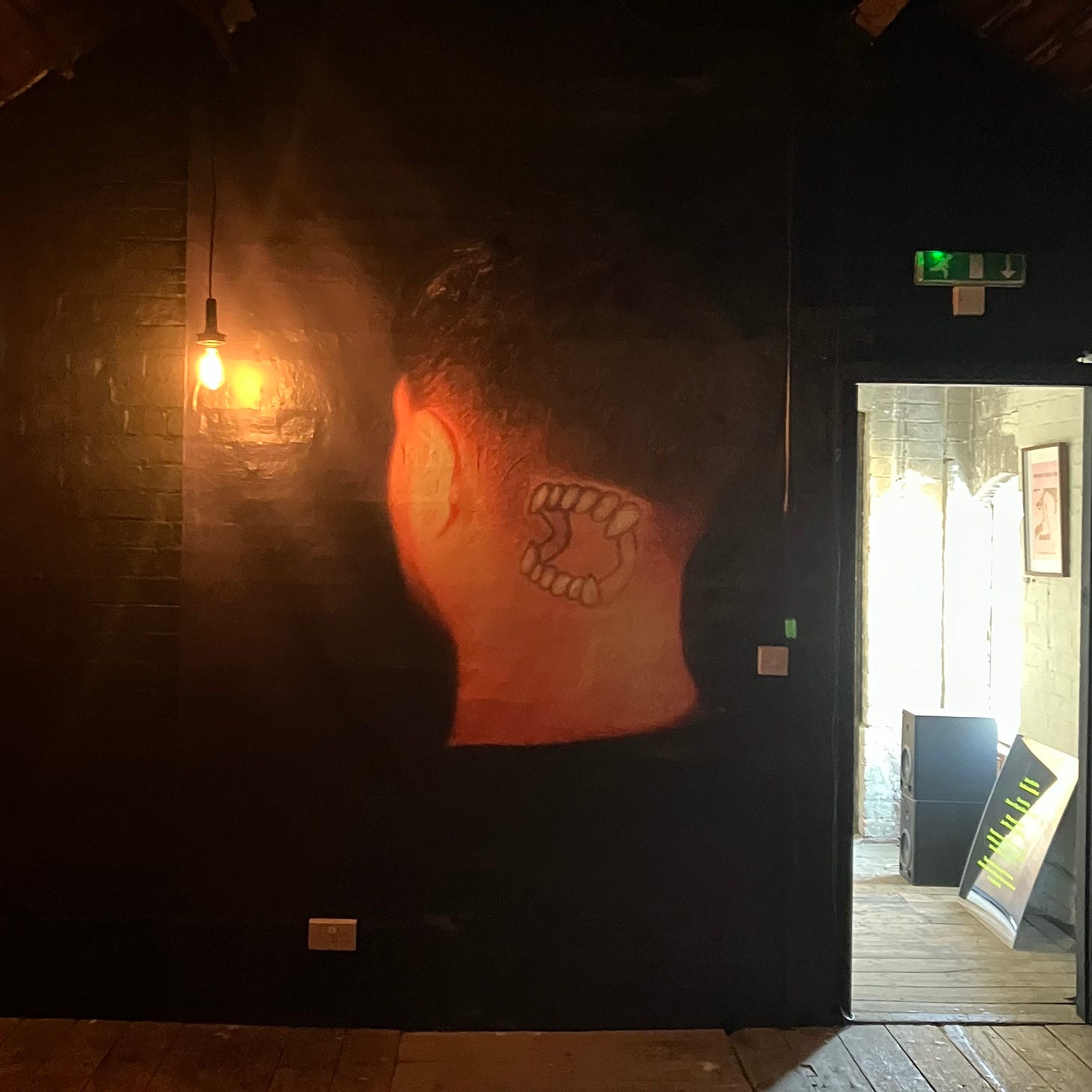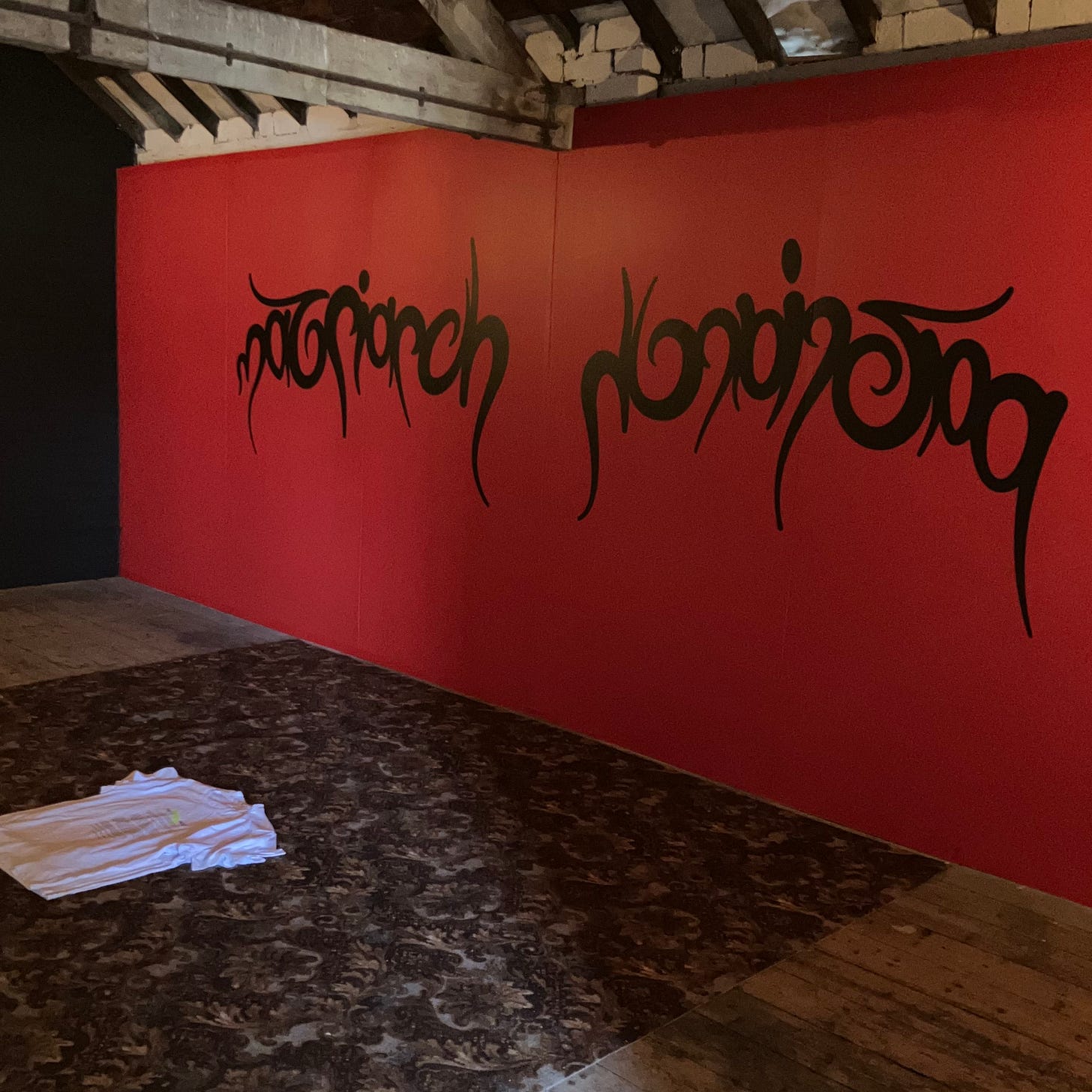Inside the Saracen's Head
The final exhibition at Birmingham's Cheap Cheap Gallery, from 5 August - 30 September 2023, artist Ishmail De Niro's first solo show.
It’s not a nice place to be. The windows are blacked out and the walls are dark. There is a drab old carpet in the centre of the floor with a pile of t-shirts on it. A faulty lightbulb hangs in one corner, sputtering into half-life the face of a huge green witch that’s been stuck to the wall. Someone has chucked a dart at her nose, which sticks out at an angle. It’s stiflingly hot.
I’m in Birmingham, where the art scene, I’m told by project space manager Dinosaur Kilby, is different from London’s. There is less money about and less attention given to it than in the capital city. Perhaps that’s why the exhibition I am standing in is able to construct such a strong and definite sense of place, as opposed to the abstract, interchangeable notion of ‘space’ that is used to demolish the particularity of locations in order to facilitate the flow of goods and capital through them. There’s nothing white about these walls.
I’m in ‘The Saracen’s Head’, the unlikely combination of a pub and a mosque. The pub atmosphere comes from the dim lighting, the dart, the old carpet, the inkjet print of the artist’s skin fade on the wall opposite the witch. It comes from the implication that the site of boozy revelry is also where people’s darkest fears emerge and swell to uncomfortable proportions, to be confronted, if only symbolically, with violence, if only towards an image. It comes from the headache I’m getting from staying there too long. It’s a pub.
Yet the air is full of the deep, transporting smell of oud, a perfume designed to open up your spiritual receptivity. The very Wetherspoons carpet is in fact an offcut from Abdullah’s, carpet supplier to Birmingham’s mosques, with his hand-painted sign and ‘Bismillah’ written over the door. Religious access to the divine and the soggier transcendence achieved at the local don’t necessarily see eye to eye, and the title of the show, also the name of over two hundred pubs in England, alludes to ancient clashes between English and Islamic culture. In Ishmail De Niro’s telling, this history is neither resolved nor exaggerated, but is seen as a point of convergence, a starting point to be built upon, talked about, lived with.
It's good, old-fashioned installation art, designed to produce a certain kind of experience in the viewer. It’s also refreshingly an installation that actually has something to do with the part of the world that’s immediately outside its doors. It reminds me of the work of Corbin Shaw or Rene Matić, concerned with working-class England in a way that’s neither defensive nor apologetic, that’s self-critical but also affectionate, rooted but constantly evolving.
It's the place to be. The exhibition is fed by a current of South Asian hospitality: the t-shirts, for example, are free to take, and they’re the only place you’ll find the exhibition text. It says, ‘England is haunted and what have they left us, our mothers and fathers?’ At home, I put on the t-shirt, it fits, and it fills my nostrils with oud – and I’m back again in the Saracen’s Head.





In an era where art often strives for excess, the monumental minimalism of this refined exhibition is both disquieting and contemplative. Dino and Ismael have seamlessly fused painting and installation, inviting the audience to step into the gallery, which, in fact, is the masterpiece itself, transforming each visitor into a performing artist.